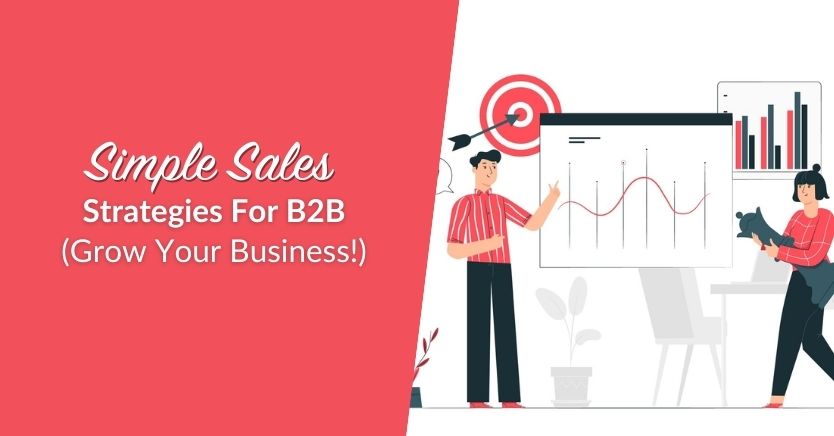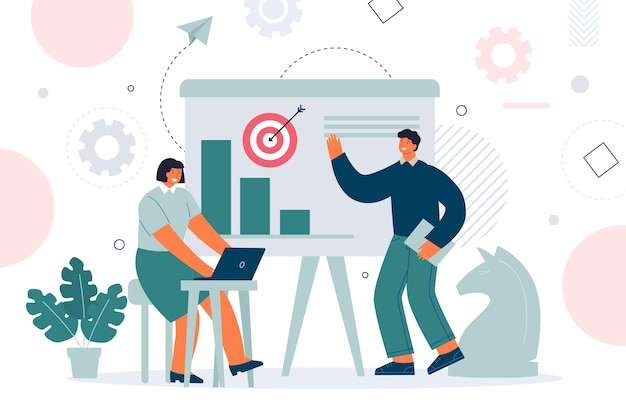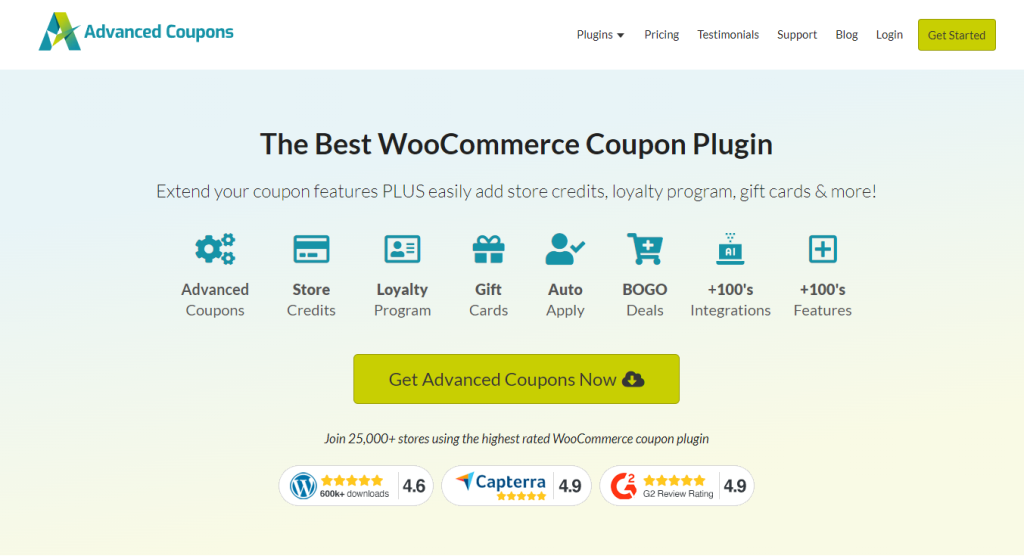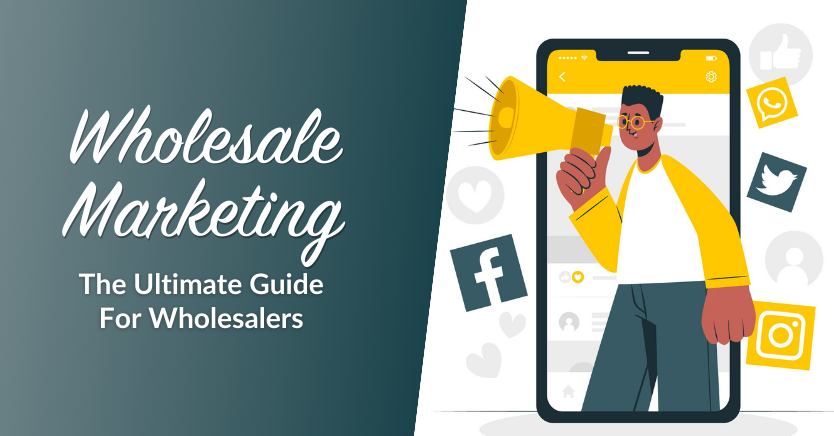
The world of B2B sales can be challenging, and having solid sales strategies for B2B is key to success. Even with top-tier products, failing to plan means you’re likely to fail.
But just having a strategy isn’t enough. You need one that truly understands your customers. This knowledge helps you outpace competitors and close more deals.
Increasing wholesale sales is one great way to do this.
It introduces your products to new audiences, lowers backend costs by increasing volume, and strengthens relationships with key buyers.
In this article, we’ll walk you through everything you need to build a powerful and effective sales strategies for B2B. So, if you’re ready to fine-tune your approach and adapt to the ever-changing needs of your market and customers, keep reading!
What Is B2B Sales?
B2B sales happens when one business sells products or services to another business instead of selling directly to individual consumers. B2B sales can involve anything from physical products to services.
One common type of B2B transaction is wholesale. In wholesale, businesses buy products in large quantities at a lower price, then sell them to other companies.

This helps businesses stock up on goods to sell to their own customers. Wholesale sales are important because they allow companies to save on costs and reach new customers through other businesses.
The B2B sales process usually follows a few key steps. First, businesses identify potential customers who might need their products or services. Next, they reach out to those businesses and start building relationships.
After that, the seller works to understand the specific needs of the potential customer. Once they know what the customer is looking for, they present a solution that fits those needs.
Finally, if everything goes well, they close the deal and make the sale.
B2B Sales Used To Be Less Complicated
In the past, B2B sales were simple. Customers would contact a vendor, talk to a salesperson about their options, and make a purchase if they liked what they heard. Marketing would bring in leads, and sales teams would guide those leads to a final sale, which makes the process predictable.
Now, B2B buyers do things differently. They start by identifying a problem and researching it online. Then, they explore all the possible solutions, ask for recommendations from friends, and read reviews on social media and forums.

After gathering all this information, they make a decision, often contacting the company only at the very end to complete the purchase.
According to McKinsey & Company, 65% of customers like to use online chats or digital tools to acquire information and talk to businesses instead of speaking to someone in person.
This has made B2B sales challenges more complex, as buyers now rely on their own research, reviews, and recommendations before reaching out to a salesperson.
Why Do You Need Sales Strategies For B2B?
A sales strategy is a plan a business uses to make revenue by showing potential customers their products and convincing them to buy. A good sales strategy can be used repeatedly, meaning that if you keep following it, you should continue to make sales with new customers.

While sales and marketing work best when they are closely connected, it’s important to understand that sales strategies and marketing strategies are not the same.
Marketing focuses on creating awareness about your products among potential buyers. On the other hand, a sales strategy is all about persuading a specific buyer to make a purchase.
In short, marketing brings in interested people, and sales turns that interest into actual deals. Together, they contribute in the overall business growth.
How To Increase B2B Sales (10 Strategies)
Wholesale is a common strategy in B2B sales. It offers big benefits like larger orders and long-term partnerships. Plus, bulk orders often lead to repeat orders. This creates a steady stream of income.
With WooCommerce, wholesale becomes much easier with tools like plugins and tiered pricing. These features simplify the ordering process and make it even better for your B2B customers and sales.
However, the most effective way to sell isn’t just about making sales, but about selling smart. By using the B2B sales techniques and strategies outlined here, you’ll be better equipped to reach your profit and revenue targets.
Strategy 1: Increase your outreach efforts
The first step in any B2B sales campaign is figuring out how to attract the right customers. It’s not just about getting any customer. You want to target those who can bring in the amount of business you need. To do this, you need a clear plan to reach out to potential buyers who are a good fit for your wholesale products.
In our article on wholesale marketing strategies, we shared several ways to bring in more wholesale customers. You can start by cold calling or sending direct mail to potential clients. Email outreach is another great tool, especially if you combine it with sending samples to pre-qualified prospects.
You can also look at your current customer list and see if any of them could become wholesale buyers.
Additionally, creating a strong recruitment page on your website can allow potential buyers to identify themselves as wholesale customers.
Now, here’s your challenge: Plan your outreach for the next 30 days. Think about what strategies have worked well for you in the past and put more effort into those areas. By focusing on what has been successful, you can fill your sales pipeline and increase your chances of success.
Strategy 2: Work close with your top 20%
If you know the 80/20 rule, then you understand that about 20% of your wholesale customers likely bring in 80% of your revenue.
Because of this, it’s smart to focus more attention on those top customers. By building stronger relationships with them, you can increase their loyalty and sales.
To strengthen these relationships, there are several strategies you can use. For instance, you could start by sending free samples of products they haven’t purchased yet, or schedule a visit to help them improve how they market your products.
Additionally, offering special deals, like lowering prices or removing minimum order requirements, can encourage them to buy more. Furthermore, offering free shipping is another great incentive.
Another idea is to celebrate the anniversary of their partnership with you, showing your appreciation for their business. To keep things running smoothly, make the ordering process as easy as possible and stay in regular contact.
Finally, surprising them with small gestures or finding ways to do joint promotions can keep them engaged and satisfied.
By focusing on these top customers, you can boost your revenue and create lasting partnerships.
Strategy 3: Go top down
If you’re working with a few stores in a larger chain and want to expand, then it can be really helpful to approach the head office directly. By doing this, you can boost the buying power of multi-store customers.
At the same time, it helps you get approval from management. Management buy-in is crucial for landing bigger deals and making your product a regular part of their lineup.
However, finding the right person to talk to at the head office can sometimes be tricky. A quick and easy solution is to use LinkedIn.
If you can’t get the contact information from the store owners, you can instead use LinkedIn to find the key people in the company. Simply search for the company name, go to the “People” tab, and you should be able to find who you need.
Additionally, if you’re unsure of the company’s exact name, it’s often listed in the footer of the retail store’s website.
When using this approach, it’s important to build a strong relationship with the main decision-makers. After all, these are the people whose support you need to grow your business.
If you’re having trouble getting your product into the stores, you could suggest a trial run.
For instance, ask them to put your product in a couple of stores and track the results. If the product does well, it will be much easier for them to agree to expanding it further. At the same time, it will make them look good within their company.
Strategy 4: Wholesale-specific coupon deals
Coupon deals have always been a popular way to get customers to make a purchase and feel special. However, did you know you can also use coupons for wholesale deals?

That’s where Advanced Coupons for WooCommerce comes in. We created this plugin, and one of its key features is the ability to restrict coupons based on user roles. This means you can specifically offer coupon deals to your wholesale customers, making them feel just as valued as your retail buyers.
While coupons are a great way to motivate people to buy, you might be wondering how to use them effectively with B2B customers.
For example, you could run seasonal campaigns to match your business cycle, offer free shipping to encourage bulk purchases, or create conditional deals like BOGO (buy one, get one).
Additionally, you can offer freebies when customers reach certain order quantities or even create one-time deals for your special customers.
There are endless possibilities for using coupons with your wholesale customers. With the right strategy, the only limit is your imagination!
Strategy 5: Be farsighted
Being far-sighted is an important strategy that can help you win more customers, especially in B2B sales. It’s not just about focusing on quick gains, but about being patient and building long-term relationships. Without this approach, rushing to close deals might cause you to lose customers to your competitors.
Let’s say, in application to your WooCommerce online store, being far-sighted means creating a customer value proposition. This offers more than just short-term benefits.

Meaning, you should focus on providing long-lasting value that keeps customers coming back. Before offering your services, it’s smart to first research what other companies are doing and then figure out how you can stand out.
This approach helps you retain and win more customers in a competitive market, where focusing only on quick wins can be risky.
To do this effectively, B2B companies need a clear vision of the future and strategies that align with long-term goals. Additionally, reaching out to customers in ways they appreciate and building partnerships can help you grow your business and stay ahead of the competition.
Strategy 6: Avoid being aggressive while selling
Overly aggressive sales tactics can easily push potential customers away. This can cause lost sales and, in turn, damaging your brand’s reputation.
Generally, customers prefer to make decisions without feeling pressured or tricked. Therefore, a better approach is to focus on understanding their needs, offering helpful information, and guiding them through the buying process.
As a result, this builds trust and strengthens long-term relationships.
When customers feel valued and respected, they tend to be more satisfied, more loyal, and more likely to return for future purchases. Additionally, they are more likely to recommend your business to others, and spread positive word-of-mouth.
Strategy 7: Sell solutions, not products
Successful salespeople focus on selling the benefits of a solution, not just the product. By showing customers how the solution meets their needs, they can build stronger loyalty and long-term relationships.
However, selling solutions can be harder than just selling a product. It requires salespeople who know how to explain the benefits clearly, whether in person, over the phone, or online. Additionally, providing a dedicated phone line for customers can improve communication and build trust.
In today’s competitive B2B sales market, companies are winning customers by offering solutions rather than just products. This approach works because many companies sell similar products. But focusing on the benefits of your solution can make you stand out and better meet customer needs.
Strategy 8: Get feedback
Focus on actively collecting and using customer feedback to improve your product or service. You can engage your customers through surveys, social media, and direct conversations, and ask for their honest opinions.
This feedback not only helps you find what’s working and what needs improvement, but also allows you to make changes that better meet customer needs. Additionally, showing that you value their input builds loyalty and keeps customers coming back.
To ensure success, make sure to create a welcoming environment where customers feel comfortable sharing their thoughts.
By listening to feedback and making changes based on their suggestions, you build trust. As a result, this leads to happier customers, more repeat business, and referrals.
Lastly, customer feedback is a powerful tool for growing your business and boosting sales.
Strategy 9: Leverage tools in your website
Having a high-performance website is important, especially for businesses involved in B2B online stores.
A well-designed website is more than just a brochure. It’s the hub of your online presence and a key tool for attracting and converting customers. For wholesale businesses using WordPress, pairing it with WooCommerce allows you to showcase your wholesale products and expertise while offering a seamless shopping experience.
Additionally, wholesale buyers often search online for providers, and your site must be easy to find while also demonstrating your expertise clearly.
When it comes to adding wholesale to your business, WooCommerce makes it simple to cater to wholesale buyers. By integrating Wholesale Suite into your WooCommerce store, you can offer special pricing, bulk discounts, and a smooth buying process designed for wholesale customers.
Wholesale Prices (Free Plugin) is a free tool that allows you to set special pricing for your wholesale customers. This is especially useful for offering discounted rates exclusively to wholesale buyers while keeping your regular prices for retail customers.
Wholesale Prices Premium plugin is an upgrade that builds on the free version, which offers more advanced features. For example, with this plugin, you can set up tiered pricing based on the quantity ordered, enforce minimum order rules, and apply different discounts for specific customer groups.
Wholesale Order Form plugin simplifies the bulk ordering process for wholesale customers. It creates a streamlined order form that displays all your products in a simple table format, and allow customers to search, filter, and add items to their cart without navigating multiple product pages.
Wholesale Payments plugin offers various payment methods specifically designed for wholesale customers. This includes options like net 30 payment terms, accepting purchase orders, or offering deferred payment methods.
By integrating Wholesale Suite into your WooCommerce store, you create a fully customized, efficient, and user-friendly B2B wholesale experience. This powerful combination allows you to have full control over pricing, order processing, and payments, while ensuring that only qualified customers can access your exclusive wholesale deals.
Strategy 10: Follow-up consistently
The last tactic to cover is simple, yet very important: Following up consistently.
We all know life gets busy, and it’s easy to push follow-ups aside, thinking, “I’ll do it later.” However, staying consistent with follow-ups is what keeps your sales funnel active and helps grow your business.
To make this easier, one way is to create a system for it. Systematizing means writing down exactly how you do each task in your business, especially your follow-up process.
By having a clear, step-by-step plan, you can stay organized and ensure you keep up with your follow-ups. In turn, this will help you build stronger relationships and close more deals.
What Are The Most Important B2B Sales Metrics?
Tracking sales metrics is important because it gives you a clear view of how each sales and entire business are performing. Additionally, it helps you see how close you are to reaching your goals and whether adjustments to your strategy are needed to improve sales.
For example, one key metric to track is new leads in the pipeline. This shows how many new leads add to the pipeline during a specific period. Furthermore, you should monitor the conversion rate, which measures how effectively your reps turn leads into paying customers.
Another essential metric is the annual contract value (ACV), which tracks the average sales amount from a customer contract over the course of a year. This gives you insight into the size of your deals.
Finally, the customer lifetime value (CLV) is important because it tracks the total value of all purchases, including upsells and renewals, that a customer makes throughout their relationship with your company.
By keeping an eye on these key metrics, you can gain a better understanding of your sales performance and make informed decisions to help your business grow.
Which B2B Sales Strategy Is For You?
The shifts in today’s wholesale market have made it harder to reach wholesale B2B leads. However, they also open up new chances for creative sales strategies and marketing efforts.
In order to meet and exceed sales goals, it’s important to understand how your wholesale business process works and use strategies that fit these changes.
Whether you focus on growing through your wholesale products or through direct sales, building strong B2B sales strategies is key to generating leads. This could greatly align sales and marketing efforts.
By combining these strategies, you can make the sales process smoother and reach your goals more consistently.
Frequently Asked Questions
What is a B2B sales strategy?
A B2B sales strategy is a plan a business uses to sell its products or services to other businesses, instead of individual customers. In this type of sales, the strategy focuses on understanding the needs of business buyers, who usually have more complex decision-making processes and take longer to make purchases. Ultimately, the goal of a B2B sales strategy is to build strong relationships with other businesses and offer solutions that meet their specific needs.
What are some B2B strategies?
There are several strategies businesses can use to grow their B2B sales. For example, one popular strategy is content marketing, where businesses create helpful content to educate potential customers about their products or services, which builds trust. Additionally, another effective strategy is account-based marketing, which focuses on high-value clients and tailors the approach to meet their specific needs.
What are the 5 sales strategies?
The first sales strategy is prospecting, which focuses on finding potential customers. Next, building relationships helps businesses understand their prospects’ needs and build trust. Then, presenting solutions shows how the product addresses the customer’s problems.
After that, handling objections tackles any concerns the customer may have. Finally, closing the sale finalizes the deal and secures the purchase. Together, these steps are essential for a successful sales process.
How to increase sales in B2B sales?
To increase B2B sales, businesses can focus on targeted outreach and building stronger relationships. For instance, one way is by creating high-quality leads through content marketing, social media, and attending industry events. Moreover, personalized communication and follow-ups help move these leads through the sales process more effectively.
Conclusion
As wholesale buyers become more research-driven and have more vendor options, traditional methods aren’t enough anymore. Therefore, wholesale businesses need strategies that target the right customers, offer long-term value, and build strong relationships.
In this article, walked you through everything you need to build a powerful and effective sales strategies for B2B:
- What is B2B sales?
- B2B sales used to be less complicated
- Why do you need sales strategies for B2B?
- How to increase B2B sales (10 strategies)
- What are the most important B2B sales metrics?
- Which B2B sales strategy is for you?
Whether it’s through wholesale pricing, outreach, or customer engagement, understanding their needs and using focused sales strategies can help you meet and exceed your goals.
Got questions about this article? Feel free to leave a discussion on the comment section below!








